Evolutionary Ecology
The department of Evolutionary Ecology gathers complementary skills in behavioural ecology, population dynamics, population biology, community ecology, and methodology (statistics and modelling). The research done in the department aims at studying how animal species evolve in a changing world by understanding the causes of the evolution of traits, adaptations and interactions. For that, we consider different levels of organization from individuals to populations and communities. Because organisms cannot be considered isolated from other biotic factors, we consider pathogens but also competing species within communities.
We study how individuals adapt to their environments that are largely impacted by anthropic pressures, and how life history traits and behaviour evolve in response to these pressures. Although we mainly focus on phenotype, we more and more consider the mechanistic link between the genotype and the phenotype. We develop the theoretical framework of our discipline through a conceptual and modeling approach. In parallel, we test hypotheses that arise from theoretical predictions through experimental, comparative and observational approaches on different biological models (insects, birds, mammals). Experimental approaches are developed in the laboratory (insect model) and in natura (bird, insect and mammal models). Observational and comparative research is mainly concerned with vertebrates. Our approaches are also, and increasingly, interested in the mechanisms of adaptive responses. In addition to the classical approaches of demographic analysis and trait change, methods of ecophysiology, chemical ecology and molecular biology are used.
Our department hosts several long-term studies of wild populations of different species. These long-term studies offer a valuable way to understand how biotic and abiotic factors affect individuals’ life history traits, and the functioning of populations in natura. Five populations of mammalian species are thus monitored for several years (more than 40 years on roe deer, 30 on Alpine marmots, 25 years on cats, 16 years on zebras, and 20 years on impala). Two of our study sites (La Sassière in Vanoise National Park (Alpine marmots) and Hwange National Park) have been certified as “Site d’Etude en Ecologie Globale” (SEEG), and two (ZA “Hwange” and ZA “Antarctic and sub-Antarctic”) were certified as “Zone Atelier” by the CNRS.
The department of Evolutionary ecology is also largely involved in training activities. Lastly, we also have strong socio-economic relationships. Indeed, because we address questions of major societal interest (global warming, public health) we tightly collaborate with socio-economic partners (Office Français de la Biodiversité, Vanoise National Park, Hwange National Park in Zimbabwe, Office National des Forêts, etc.) and participate to general public and media events.
Publications
Display of 2101 to 2130 publications on 2449 in total
Molecular phylogeny of the African pygmy mice, subgenus Nannomys (Rodentia, Murinae, Mus): Implications for chromosomal evolution
Molecular Phylogenetics and Evolution . 36 ( 2 ) : 358-369
Journal article
see the publicationSystematics and evolution of the subfamily Gerbillinae (Mammalia, Rodentia, Muridae)
Molecular Phylogenetics and Evolution . 35 ( 3 ) : 674-688
Journal article
see the publicationCytotoxic T Cell Responses against Mesothelioma by Apoptotic Cell-pulsed Dendritic Cells
American Journal of Respiratory and Critical Care Medicine . 169 ( 12 ) : 1322-1330
Journal article
see the publicationEtude de maladies abortives non réglementées chez les ongulés sauvages de montagne et les ruminants domestiques des Bauges (Pré-Alpes du Nord, France). 22èmes Rencontres du Groupe d’Étude sur l’Écopathologie de la Faune Sauvage de Montagne
22èmes Rencontres du Groupe d’Étude sur l’Écopathologie de la Faune Sauvage de Montagne .
Conference paper
see the publicationEcotoxicologie aquatique et modélisation des effets biologiques. Rapport final
: 55
Report
see the publicationFood availability effect on population dynamics of the midge Chironomus riparius: a Leslie modeling approach
Ecological Modelling . 175 ( 3 ) : 217-229
Journal article
see the publicationLes modèles matriciels de type Leslie : Une approche couplée Mathématiques et Statistiques
incollection . -- : 377-392
Journal article
see the publicationAntibodies to Aleutian Mink Disease Parvovirus in free-ranging small carnivores from south-western France: implication for the conservation of the European mink (Mustela lutreola)
Journal of wildlife diseases . 40 : 394-402
Journal article
see the publicationIs there geographical variation in human handedness?
Laterality . 9 : 35-52
Journal article
see the publicationStudent athletes claim to have more sexual partners than other students
Evolution and Human Behavior . 25 : 1-8
Journal article
see the publicationAn age-dependent model describing the spread of panleucopenia virus within feline populations.
Banach Center Publications Polish Academy of Science . 63 : 197-207
Journal article
see the publicationSimultaneous analysis of a sequence of paired ecological tables with the STATICO method
Ecology . 85 : 272-283
Journal article
see the publicationMathématiques et Informatique du Vivant " : une formation interdisciplinaire qui voit le jour grâce au LMD
21ème congrès de l'AIPU (Association internationale de pédagogie universitaire) . : 1820-1822
Conference paper
see the publicationSimple table for estimating confidence interval of discrepancy frequencies in microbiological safety evaluation
Journal of Microbiological Methods . 56 : 137-139
Journal article
see the publicationLife history traits and genome structure: aerobiosis and G+C content in bacteria
Lecture Notes in Computer Science . 3039 : 679-686
Journal article
see the publicationThe effects of hurricane Lothar on habitat use of roe deer
Forest Ecology and Management . 195 : 237-242
Journal article
see the publicationDynamics of production of sexual forms in Aphids: theoretical and experimental evidence for adaptive "Coin-flipping" plasticity
The American Naturalist . 163 : E112-E125
Journal article
see the publicationMolecular and behavioural analyses reveal male-biased dispersal between social groups of domestic cats
Ecoscience . 11 : 175-180
Journal article
see the publicationEffective size of two feral domestic cat populations (Felis catus L.): effect of the mating system
Molecular Ecology . 13 ( 2 ) : 483-490
Journal article
see the publicationMorphological variation of Palmatolepis Devonian conodonts: species versus genus
General Paleontology . 3 : 1-8
Journal article
see the publicationCoccolith size increase of Calcidiscus leptoporus offshore Morocco during the Last Glacial Maximum: an expression of enhanced glacial productivity ?
J. Nannoplankton Res. . 26 : 1-12
Journal article
see the publicationSize distribution of Holocene planktic foraminifer assemblages: biogeography ecology and adaptation
Marine Micropaleontology . 50 : 319-338
Journal article
see the publicationAvailability and use of public information and conspecific density for settlement decisions in the collared flycatcher
Journal of Animal Ecology . 73 : 75-87
Journal article
see the publicationMultiple causes of sexual segregation in European red deer : enlightenments from varying breeding phenology at high and low latitude.
Proceedings of the Royal Society B: Biological Sciences . 271 : 883-892
Journal article
see the publicationRôle des contraintes évolutives dépendantes du sexe en biologie des populations
incollection . -- : 1369-1379
Journal article
see the publicationVariation in harem size of red deer (Cervus elaphus) : the effects of adult sex ratio and age structure.
Journal of Zoology . 264 : 1-9
Journal article
see the publicationCoexistence de la reproduction sexuée et asexuée chez l'hyménoptère parasitoïde Venturia canescens : Aspects comportementaux et écologiques
incollection . -- : 409-418
Journal article
see the publicationComparative analysis of morphological traits among Drosophila melanogaster and D. simulans: genetic variability clines and phenotypic plasticity
Genetica . 120 : 165-179
Journal article
see the publicationSpecific effects-of cycling stressful temperatures upon phenotypic and genetic variability of size traits in Drosophila melanogaster
Evolutionary Ecology Research . 6 : 873-890
Journal article
see the publication
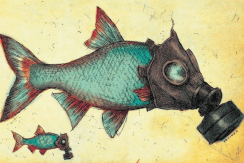
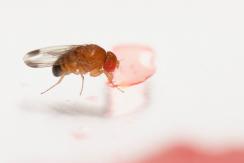
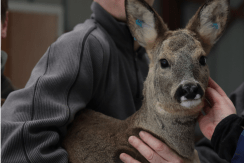
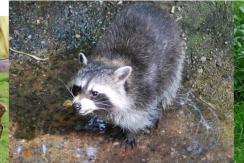
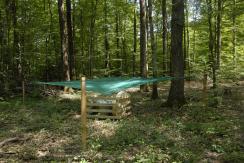
You also, comment on this article